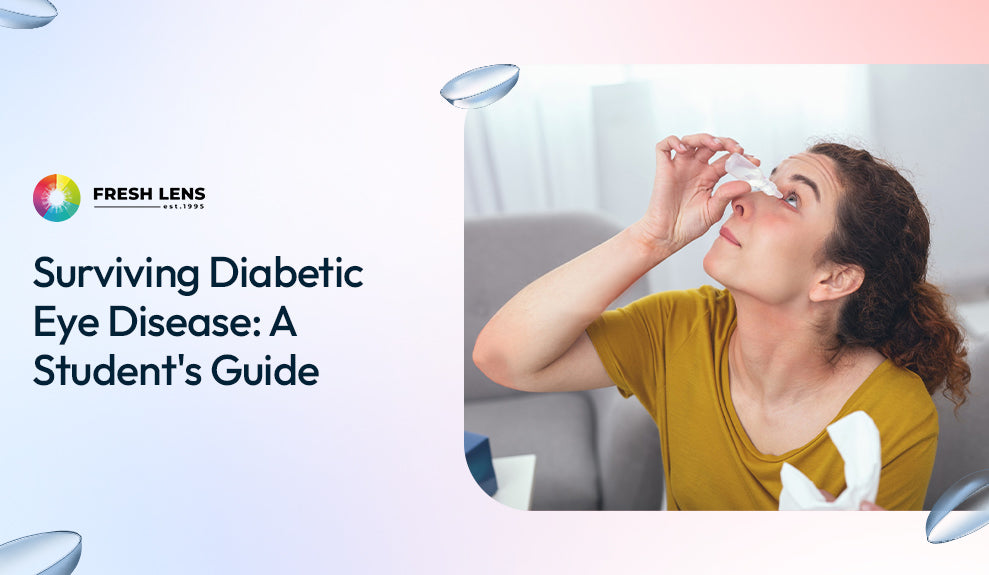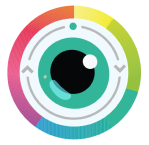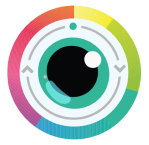
The life of a student with diabetes is overwhelming, indeed. Classes, assignments, and monitoring of blood sugar levels can make eye health fall to the bottom of the priority list but it shouldn't. Young adults can be affected by diabetic eye disease, mainly diabetic retinopathy, which at times progresses without warnings until vision loss becomes an issue. By instilling a few good practices, you can save your eyes and maintain your health.
What is Diabetic Eye Disease?
Diabetic eye disease includes various eye problems caused by diabetes, with the most common being diabetic retinopathy. This condition happens when high blood sugar levels damage the blood vessels in the retina, leading to vision issues.
As diabetes becomes more prevalent among adults today than before there's an increased risk of eye diseases for students. Diabetes and vision loss go hand in hand but early detection can significantly improve outcomes.
Recognizing the indications of eye disease can be challenging. Being aware of what to watch for can help you catch the disease early on.
- Struggling with eyesight after getting enough rest.
- Dark. Floaters that appear to move through your vision.
- Having trouble distinguishing colors or experiencing shifts in your vision.
If you notice any of these signs or symptoms cropping up in your life recently it’s best to schedule an appointment with an optometrist soon! It's always wise to keep up with eye check ups as they can catch any problems before they turn into something bothersome.
Importance of Regular Eye Scans
Regular eye check ups are crucial for students with diabetes as they help in detecting issues such as retinopathy when treatments are most beneficial. Think of these examinations as a component of your healthcare regimen alongside monitoring blood sugar levels and visiting the dentist. Numerous college campuses provide affordable eye exams; therefore it's advisable to inquire at your student health center, for eye care choices.
Healthy Habits to Keep Diabetic Eye Disease at Bay
Diabetes and eye care for young adults are closely linked, but there are actions you can take to reduce the risk of vision issues:
Healthy Diet
One of the best prevention tips is good nutrition. A diet rich in fiber, lean protein, and whole grains helps regulate blood sugar and protects your eyes. Include leafy greens , omega 3-rich fish and colorful veggies. If you’re prone to blood sugar spikes, keep healthy snacks like nuts, fruits or yogurt nearby.
Maintain Blood Sugar Levels
Since high blood sugar is the main driver of diabetic eye disease, regular monitoring and stabilization are key. Find out your ideal glucose targets from your healthcare provider and maintain them. You can use apps or a diabetes journal to keep track of your glucose levels. They can play a key role in preventing diabetic eye disease.
Exercise
Physical activity helps control blood sugar, benefiting eye health; even a daily walk is helpful. This doesn’t mean you have to spend all your free time at the gym. Ask your health provider about the ideal exercise level and intensity you must maintain to keep eye diseases at bay. Use habit-tracking apps or set phone reminders. Small, consistent actions over time make a significant difference for eye health.
Managing Stress
Let's face it, student life is stressful, which can make managing diabetes even harder. High stress can drive up blood sugar, so it’s important to incorporate relaxation into your daily routine. Take breaks to refresh and recharge. It’s a digital world and you can stay organized with planners or digital tools to reduce anxiety. You can also use mindfulness apps like Headspace for on-the-go relaxation. Less stress means better blood sugar control, which supports overall eye health.
Daily Vision Protection
Protecting your eyes from everyday stressors can also make a big difference. Here are a few tips on eye care for students with diabetes.
- Wear Sunglasses: Sunglasses that block 100% of UVA and UVB rays can reduce the risk of diabetic eye issues.
- Limit Screen Time: Apply the 20-20-20 rule. Every 20 minutes, look at something 20 feet away for 20 seconds to ease eye strain. Use blue-light filtering glasses to reduce eye strain.
Conclusion
Taking care of your eyes now can help preserve your vision for the future. Maintain stable blood sugar, scheduling annual eye exams, and follow healthy habits to make a smart investment in your health. Your eyes deserve the care, and with a little effort, you’ll keep your vision clear for years to come.

































